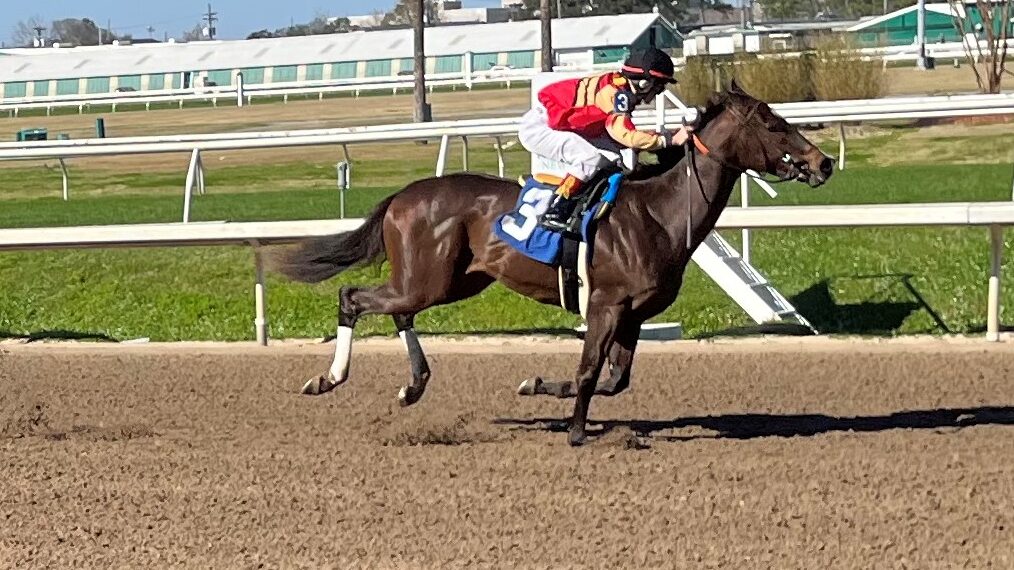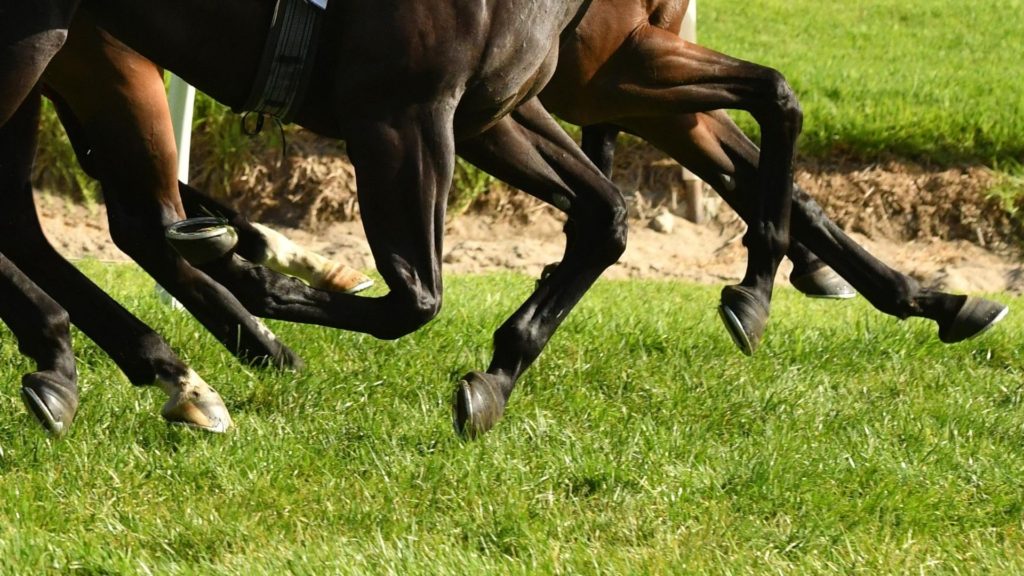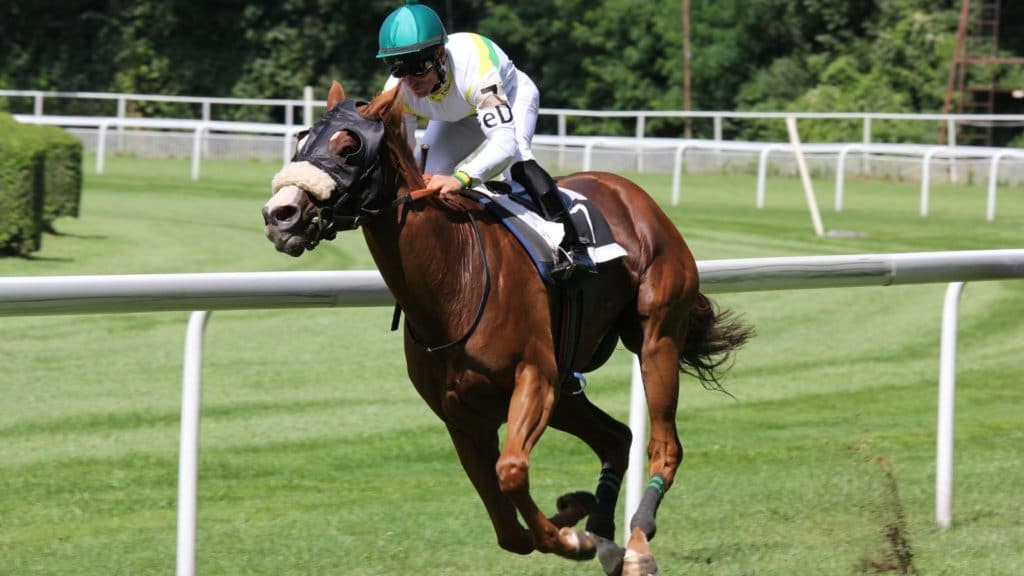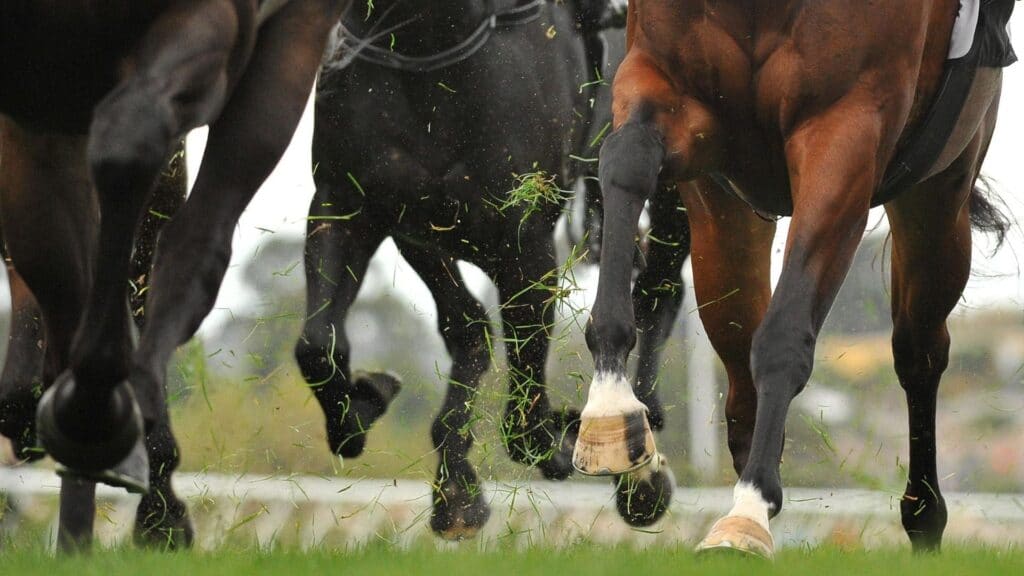Last updated: February 22, 2023
Witnessing a horse change leads while racing at full speed is fascinating. Changing leads is the act of switching the leg that will reach farther forward in stride, but is this natural, and why do horses do this?
Racehorses’ change leads to maintaining balance and negotiating a turn to the left or the right more adeptly and surging past their competitors. A horse tires quicker when they continually stay in the same lead during a race.
The correct lead for your horse is the most straightforward strategy you’ll use to travel the shortest distance between two points quickly. Switching leads and using the right lead contribute to the performance of racehorses.
Importance of horses being in the correct lead.
Being in the correct lead is important for a horse because it affects its balance, athleticism, and overall performance. When a horse is in the correct lead, it means that its leading front and hind legs are on opposite sides of its body, and this allows them to maintain balance and move efficiently.
Here are some specific reasons why being in the correct lead is important:
- Balance: When a horse is in the correct lead, their weight is evenly distributed across its body, which helps them maintain balance while turning or changing direction. This can be especially important during performance events such as dressage, jumping, and barrel racing.
- Athleticism: Being in the correct lead also allows a horse to move with more power and agility. This is because they are able to use their hindquarters effectively, which helps them generate more speed and lift during movements like jumping.
- Comfort: When horses are in the correct lead, they are more comfortable and less likely to suffer from injuries or soreness. This is because their body is moving more naturally and efficiently, which reduces the strain on their muscles and joints.
- Communication: Being in the correct lead is also important for communication between the horse and rider. It allows the rider to direct the horse more effectively and gives the horse a clear understanding of what is expected of them.
If a racehorse runs on the wrong lead around a turn, he puts extra effort into its stride through each step. When they switch to the correct lead, it gives them a boost of energy. This boost in power is critical for riders and their horses’ chances of winning a race.
Many riders focus on changing leads in the stretch driving to the finish line. Instead, jockeys should focus on switching to the correct lead down the backside, which helps the horse.
Some horses tend to stay on their inner lefts in the lane. However, if you don’t change leads on the backside, your racehorse will get tired soon before it changes at the head of the lane.

Failure to timely change results in more fatigue, making your racehorse hang and stop. Changing leads is the most crucial exercise riders need to teach their racehorses.
The commands you give to your horse depend on how well-balanced and light your horse is on its feet. Proper training can sharpen your racehorse’s mind.
He’ll learn from the training and revert quickly to the benefit of a preferred left lane. When your racehorse is skilled enough to change leads, its confidence pulls off the maneuver at full speed.
Effectively changing leads improves their conformation. Their body will allow it at the top speed based on their physical strength.
Moreover, lead change is an essential characteristic of horses when they participate in the Olympic dressage competition.

How to Command for Lead Change
A very well-balanced racehorse will quickly understand the need for changing the lead. Riders can use simple commands like a flick of their wrists.
The left wrist is used to take the left lead, whereas the right wrist is used to make the right lead. Along with the flick, you can slightly drift the horse in or out when directing them for a lead change.
A whip is used with the flick and drifts to help with the timing. All these cues are used when the racehorse waits for the signal on the bridle. The ideal time to give a command is something an experienced rider knows.
After a few weeks of deliberate training and leadership, your horse will naturally change leads at the appropriate time. Horses changing leads effortlessly and naturally is the ultimate goal when training a racehorse.
A rider needs to observe his horse closely. The rider should notice if he changes leads normally, late, early, or too often. If there is a change in the horse’s behavior regarding lead changing, it’s a cause of concern.
Sometimes a racehorse might have an underlying problem or injury. Changing the lead can exert more pressure on the injured area or limb. A thorough examination of the horse is quite critical before you train the horse to change leads.

How to Tell if a Horse is in the Correct Lead?
If you weren’t raised with horses, recognizing proper leads is tricky. Frequently it’s difficult to tell when your horse is not in the right lead. Hopefully, with these tips, you’ll notice when a horse travels in the correct lead.
Horses need to take an inside lead, the left lead on the turns, and use the right lead when on the straightaways. If you make the horse run an entire race on the left lead, the horse will tire more quickly if he doesn’t switch leads.
To check if your horse is in the correct lead, lean over your horse’s inside shoulder and notice when his feet hit the ground. However, do this in an open field and be careful around fences and always keep yourself in position if your horse stops suddenly.
A better option is to observe his shoulder points. Notice that when the horse extends his front legs at the canter, the shoulder points should be forward, though one is farther ahead than the other.
An even better approach to affirm a correct lead is if you’re cantering on the right lead, your outside hip will turn to the inside. However, if it turns to the outside, your horse is running on the wrong lead.
You’ll figure out these methods when you start to understand how your hips move and learn to feel the horse. Getting more skilled at the canter, trot, and walk will help you notice when a particular hindfoot hits the ground.
How to Change Leads?
Now that you can tell when your horse travels in the wrong lead, how do you correct the issue? Here are some effective methods we use to get our horses to change leads.
The critical factors that successfully change the lead are the rider’s weight and the bridle, not the whip.
To direct a horse for a lead change, take a firm hold of the horse’s head. Use the reins to navigate the horse a little to the right, back to the left, and then give a quick signal to come to the right. You’ll notice the head movement.

However, make sure to keep the horse straight, so your horse doesn’t cross over into somebody else’s path.
Such signals on the reins trigger tensions that will tell a horse to change to his right lead. If that doesn’t work, you can use your weight. Lean slightly to the right, slightly to the left, and then quickly lean sharply to the right again.
Most horses change leads effortlessly when you adjust your weight, and they pick up on this method quickly.
The following is an excellent video that instructs you on how to get your horse to change leads and also explains leads. Sometimes it is best to have a visual to go along with the written descriptions. I hope you find this video helpful.
Conclusion
By carefully observing advanced and top riders as they canter their racehorses, you can gain valuable knowledge. Pay close attention to how they select the correct lead and execute lead changes while navigating turns.
Watching televised jumping events can be an effective way to observe lead changes in action, as they are often more noticeable during show jumping competitions. The more you watch and learn, the more you can improve your own horsemanship skills.
Related articles:
- Why Do Jockeys Hit Horses, Does Whipping Make It Run Faster?
- Why Do Race Horses Bleed From the Nose After Running
- Why Do Racehorses Have to Pee so Bad? Fact, Fiction & Causes
- Why Are Race Horses Legs Wrapped? Training Secrets Revealed
- Are Racehorse Deaths On the Rise?
- How Long Does a Racehorse Live?
- Are Racehorses Mistreated or Pampered? The Cold Hard Facts.
- How Often Do Racehorses Race,

About the Author: Miles Henry
Lifelong Horseman | Racehorse Owner | Published Author
Miles Henry brings over 25 years of hands-on experience training and owning Thoroughbred racehorses. Raised with Quarter Horses and Appaloosas, he’s spent a lifetime learning from horses—on the track, in the barn, and in the field. Today, he runs a small but successful racing stable in Louisiana and shares real-world insights on HorseRacingSense.com, helping horse owners, fans, and bettors navigate the sport with confidence.
📚 Books: View Miles’s books on Amazon »
🎧 Podcast Guest: Animal Tales Ep. 32 |
YouTube Interview
📩 Newsletter: Sign up for racing tips and horse care advice »
🔗 Follow Miles:
Twitter |
Facebook |
YouTube


